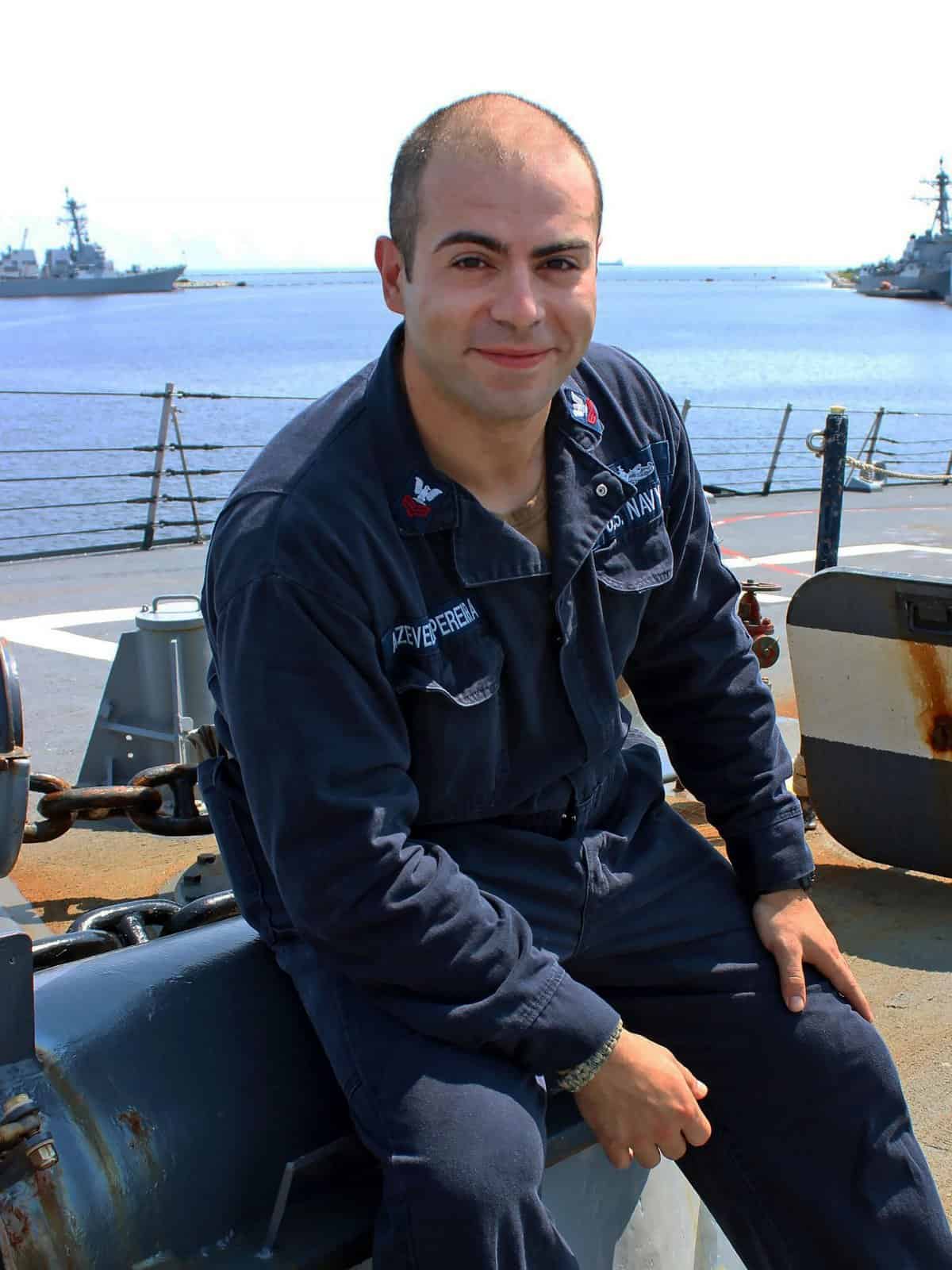Petty Officer First Class John Azevedo-Pereira joined the U.S. Navy six years ago. Today, he serves as a gas turbine system’s technician.
“My brother, Antonio Pereira, joined the Navy as a gas turbine system’s technician right after high school,” Azevedo-Pereira said. “He was my inspiration and driving force for joining the Navy when I didn’t have a set path. Now, I’m getting ready to reenlist.”
Growing up in South River, Azevedo-Pereira attended South River High School and graduated in 2008. Today, Azevedo-Pereira finds the values in South River similar to those needed to succeed in the military.
“I grew up in a small town where everyone knows each other, and work ethic and integrity were there,” he said.
These lessons have helped Azevedo-Pereira while serving aboard USS Donald Cook.
Donald Cook returned home from Naval Station Rota, Spain, after spending five years as a forward-deployed destroyer.
“These sailors distinguished themselves throughout their five years deployed overseas,” said Capt. Joseph Gagliano, commander, Destroyers Squadron 60 and Task Force 65. “Their contribution to NATO security and freedom of navigation is a legacy that will now continue with Arleigh Burke.”
Donald Cook was replaced by USS Arleigh Burke, the lead ship of its class of Aegis-equipped guided-missile destroyers. This homeport shift was the second of four in support of the U.S. Navy’s plan to rotate the Rota-based destroyers.
“Donald Cook’s time in Sixth Fleet has afforded this ship and her crew a number of invaluable experiences that are unique to this area of operation to include operating in the Black Sea, crossing the Arctic Circle, and a multitude of international operations,” said Cmdr. Matthew Curnen, Donald Cook’s commanding officer.
A guided-missile destroyer modernization program is underway to provide a comprehensive mid-life upgrade that will ensure the Arleigh Burke class will maintain mission relevance and remain an integral part of the Navy.
Serving in the Navy means Azevedo-Pereira is part of a world that is taking on new importance in America’s focus on rebuilding military readiness, strengthening alliances and reforming business practices in support of the National Defense Strategy.
“Our Navy gives us a presence on the open seas and acts as a deterrent,” Azevedo-Pereira said.
With more than 90% of all trade traveling by sea, and 95% of the world’s international phone and internet traffic carried through fiber optic cables lying on the ocean floor, Navy officials continue to emphasize that the prosperity and security of the United States is directly linked to a strong and ready Navy.
According to Chief of Naval Operations Adm. Mike Gilday, four priorities will focus efforts on sailors, readiness, capabilities, and capacity.
“For 245 years, in both calm and rough waters, our Navy has stood the watch to protect the homeland, preserve freedom of the seas, and defend our way of life,” Gilday said. “The decisions and investments we make this decade will set the maritime balance of power for the rest of this century. We can accept nothing less than success.”
There are many accomplishments that come with military service, and Azevedo-Pereira is most proud of making rank quickly.
“I came in at the bottom of the enlisted ranks,” Azevedo-Pereira said. “I’m now up for chief in a short amount of time. I hit the books, studied, asked questions, and looked at tech manuals to get here.”
As Azevedo-Pereira and other sailors continue to train, they take pride in serving their country in the U.S. Navy.
“It means a lot to serve my country and to train the junior sailors,” Azevedo-Pereira said. “I take pride in our equipment, the ship itself, and our mission.”
- This information was provided by Lt. Jill Brown, Navy Office of Community Outreach.

